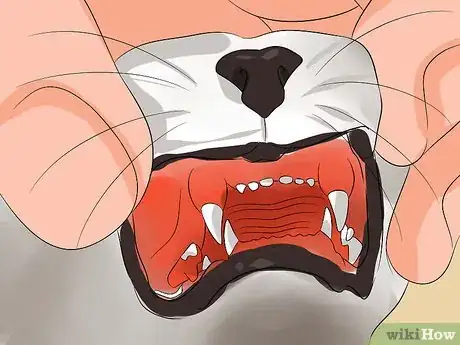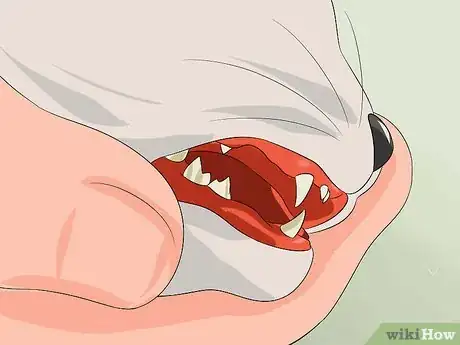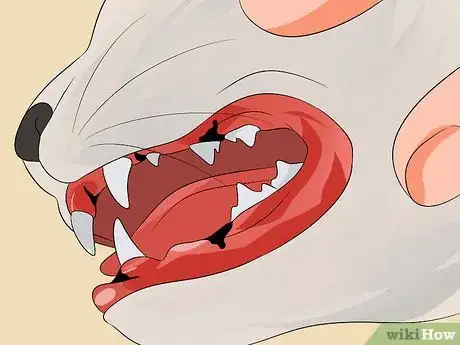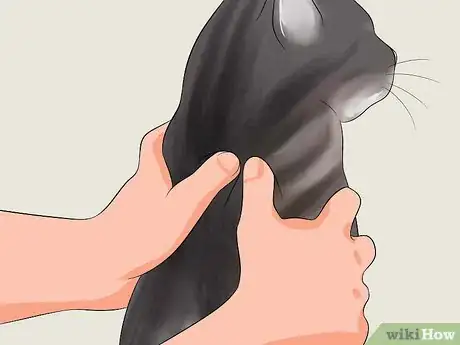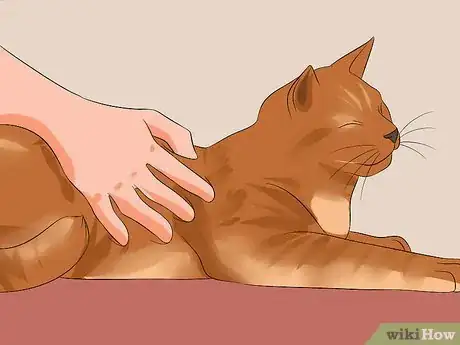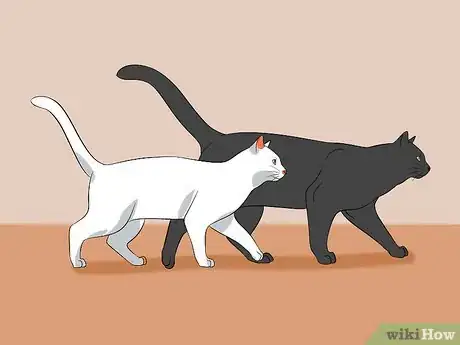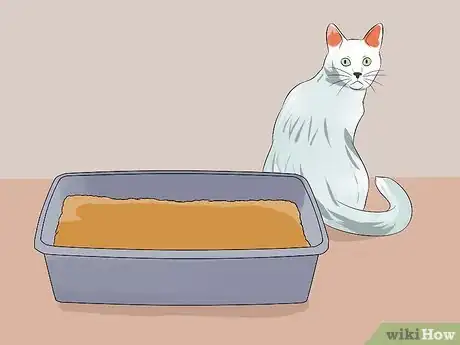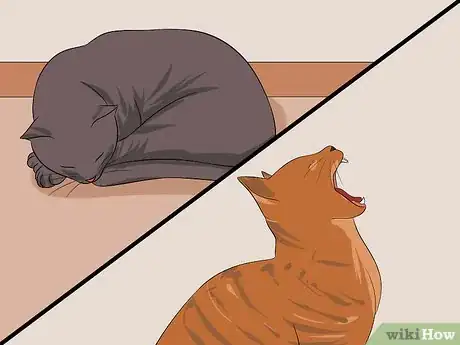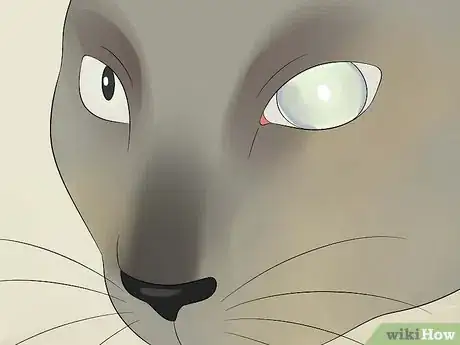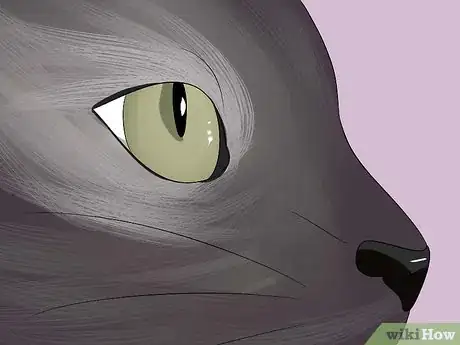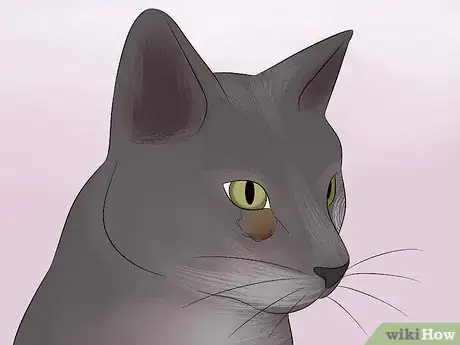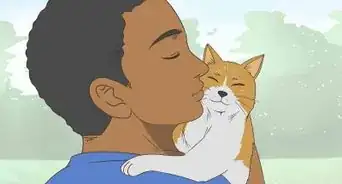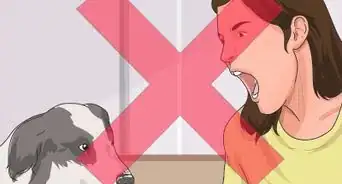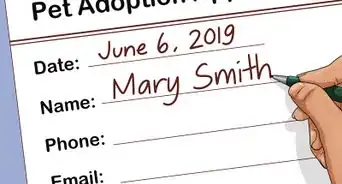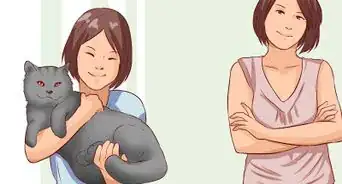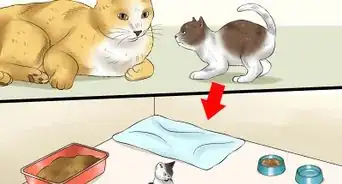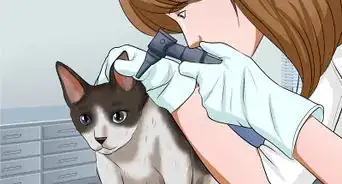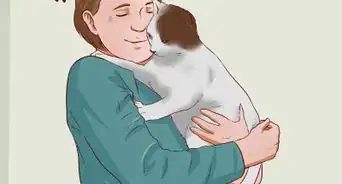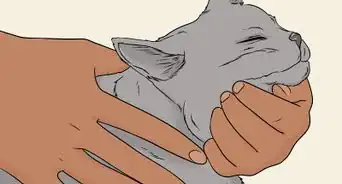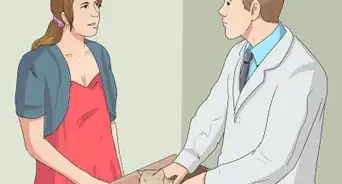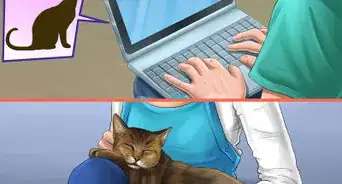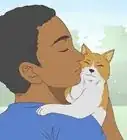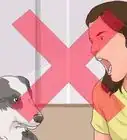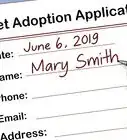This article was co-authored by Pippa Elliott, MRCVS. Dr. Elliott, BVMS, MRCVS is a veterinarian with over 30 years of experience in veterinary surgery and companion animal practice. She graduated from the University of Glasgow in 1987 with a degree in veterinary medicine and surgery. She has worked at the same animal clinic in her hometown for over 20 years.
wikiHow marks an article as reader-approved once it receives enough positive feedback. This article has 32 testimonials from our readers, earning it our reader-approved status.
This article has been viewed 799,674 times.
Unless you were present the moment your cat was born, determining its age can be difficult. However, you can learn its approximate age by examining certain features of your cat. As cats age, they tend to show it in their teeth, hair, eyes and behaviors. While a veterinarian may be able to give you the closest answer, you can look for these signs yourself to get an idea of how old your cat may be.
Steps
Examining Your Cat's Teeth
-
1Count your cat's teeth. As your cat ages, it will go through different stages of dental development. When your cat is relaxed and comfortable, try identifying the types of teeth it has to get an idea of how old your cat is.
- The first teeth to grow in a kitten are the incisors (around 2 to 4 weeks) and canines (around 3 to 4 weeks), followed by the premolars (around 4 to 6 weeks).
- A cat younger than around 4 months will not yet have its molars.
- From the ages of around 6 months up to 1 year, your cat will have all of its adult teeth. At this point the cat's teeth should be white and have no signs of wear.
-
2Look for yellowing of your cat's teeth. As your cat ages, its teeth will start to show signs of that aging. Yellowing of the teeth can indicate that your cat is an older adult. The degree of wear and yellowing will indicate just how old your cat is likely to be.
- You can expect to see slight yellowing in your cat's teeth at around 2 years of age.
- At ages 3 to 5 years old, your cat will have increased yellowing in its teeth.
- Between the ages of 5 and 10, yellowing will be easily visible.
- When your cat is 10 or older it will show clear signs of yellowing, likely on all teeth.
Advertisement -
3Check your cat's teeth for signs of wear and tear. Another indication of age that can be seen in your cat's teeth is how worn down they are. Carefully examine your cat's teeth to look for any areas that may be worn to help you determine how old your cat might be.
- Worn down teeth will have lost their points, appearing more dull than in a younger cat.
- Some teeth may have the points either worn or broken off.
- Generally your cat will begin to show signs of tooth wear when it is 5 years old.
- If your cat is between 5 and 10 years old, teeth will show clear signs of wear.
- At ages of 10 years and beyond, heavy wearing down of the teeth will be apparent. Some teeth may be missing at these ages.
- The older a cat is, the more likely it is have to have dental tartar and gum recession. This is a vague tool for aging because how quickly the teeth become dirty depends on the cat's diet.
Examining The Fur and Body
-
1Check your cat's coat for how thick it is. Depending on what age your cat is, its coat may be more or less thick. Cats shouldn't go bald or lose their hair, but by determining just how full their coat is you can narrow down their age.
- The coat of an older cat may be more thin than that of a younger one.
- Seasonal variations can occur. Summer coats are thinner than winter coats.
- If your cat is losing fur, visit with your veterinarian.
-
2Feel the texture of your cat's fur. There are some subtle differences in the texture of your cat's coat at different times in its life. By looking for these differences, you may be able to get a good sense of how old your cat is.
- Young cats will have smooth and full coats of hair.[1]
- Older cats will likely have coarser hair.
- Some patches of gray hair may appear in older cats.
-
3Notice your cat's body type. As your cat ages, levels of activity will change. These changes to how active your cat is can lead to changes in its body shape. Judging the shape of your cat's body may give you a clue as to how old it is.
- Young cats tend towards being lean and muscular, due to their high levels of activity.
- Middle age cats may be more filled out and round.
- Older cats will likely have pronounced shoulder bones and loose skin.
Looking at Your Cat's Behavior
-
1Watch your cat's mood. Older cats are more likely to have decreased vision and hearing as well as suffer from pain caused by arthritis. These conditions can have an effect on your cat's mood. If you notice your cat displaying these behaviors, it can be an indication that it is either ill, in the later stages of its life, or both:[2]
- Your older cat may act overly aggressive when you interact with it.
- Fear and anxiety can increase in older cats as well.
-
2Monitor your cat's litter-box usage. If your cat has any problems using the litter-box, it may indicate a few different issues. Specifically, older cats may have trouble using the litter box due to health issues or decreased ability to handle stress.[3]
- Some health issues that can cause trouble in older cats when using the litter-box are decreased vision, inflammatory bowl disease, and kidney or liver diseases.
- Stress can cause an older cat to not use its litter-box. Try to make its environment as calm as you can.
-
3Notice your cat's sleep patterns. In most cats, as their age increases, so to will the amount of sleep it requires. You should also keep track of when it sleeps, looking for any changes to its schedule as it ages.[4]
- Older cats may stay up all night and sleep during the day. Older cats may also howl at night.
- As cats age, their activity levels drop and they will spend more time sleeping. Younger cats will be more active, playing during the day, while older cats will want to rest.
Judging Your Cat's Age By Its Eyes
-
1Look for any clouding. As your cat ages, its eyes may turn from being bright and clear to cloudy and dull. By examining the degree of cloudiness or clearness in your cat's eyes, you can get a better understanding of how old your cat is.
- Clear and bright eyes will indicate that your cat is likely young.
- Older cats may have cloudy eyes due to age itself or the development of cataracts.
-
2Examine the iris. The iris is the colorful part of the eye that surrounds the pupil. By examining the iris, you can learn the approximate age of your cat. Look for any signs of jaggedness or roughness in the iris as you investigate.[5]
- Younger cats will have clean and smooth irises.
- As cats age, their irises will become thinner and strands will start to appear in the iris, along with pigment patches.
-
3Monitor the eyes for discharge or tears. A sign of both age and health, the tear ducts in your cat's eyes can be a great place to check up on your cat. At times, due to either aging, illness, or injury, its eyes may become overly runny. Runny eyes, as well as injury and illness, are more likely to be found in older cats, which can help you indicate your cat's age.
- Younger cats should not have noticeable tears or discharge.
- Older cats may have apparent tearing or discharge from their eyes.
- Runny eyes can also be a sign of illness or injury, so check with your veterinarian.
Expert Q&A
Did you know you can get expert answers for this article?
Unlock expert answers by supporting wikiHow
-
QuestionHow old is a 16-year-old cat in human years?
 Pippa Elliott, MRCVSDr. Elliott, BVMS, MRCVS is a veterinarian with over 30 years of experience in veterinary surgery and companion animal practice. She graduated from the University of Glasgow in 1987 with a degree in veterinary medicine and surgery. She has worked at the same animal clinic in her hometown for over 20 years.
Pippa Elliott, MRCVSDr. Elliott, BVMS, MRCVS is a veterinarian with over 30 years of experience in veterinary surgery and companion animal practice. She graduated from the University of Glasgow in 1987 with a degree in veterinary medicine and surgery. She has worked at the same animal clinic in her hometown for over 20 years.
Veterinarian
-
QuestionWhat is the human equivalent of a 25-year-old cat, and how can I prove this is my cat's age?
 Pippa Elliott, MRCVSDr. Elliott, BVMS, MRCVS is a veterinarian with over 30 years of experience in veterinary surgery and companion animal practice. She graduated from the University of Glasgow in 1987 with a degree in veterinary medicine and surgery. She has worked at the same animal clinic in her hometown for over 20 years.
Pippa Elliott, MRCVSDr. Elliott, BVMS, MRCVS is a veterinarian with over 30 years of experience in veterinary surgery and companion animal practice. She graduated from the University of Glasgow in 1987 with a degree in veterinary medicine and surgery. She has worked at the same animal clinic in her hometown for over 20 years.
Veterinarian A 25-year-old cat is so old that it's off the scale, but you're looking at the equivalent of well over 110 - 125 years for a person. To prove its age, look and see if you have an original vaccination certificate that has its kitten injections on it. Alternatively, look through the family photo album to see if there are kitten pictures that can be dated back.
A 25-year-old cat is so old that it's off the scale, but you're looking at the equivalent of well over 110 - 125 years for a person. To prove its age, look and see if you have an original vaccination certificate that has its kitten injections on it. Alternatively, look through the family photo album to see if there are kitten pictures that can be dated back.
References
About This Article
It can be hard to know how old your cat is, but you may be able to tell its age by its teeth. If your cat is less than 6 months to a year, it may not yet have all of its teeth, which consist of incisors, canines, premolars, and molars. Between 2-5 years of age, the cat’s teeth will start to yellow, and between the ages of 5-10, the yellowing will be easily visible and the teeth will start showing signs of wear. If your cat is over 10 years old, all of its teeth will likely show signs of yellowing, and they may be worn significantly. If that doesn’t help, you may be able to tell the cat’s age by examining its fur, body, and eyes. To learn tips from our veterinary reviewer on how your cat’s eyes can help you tell its age, read on!
